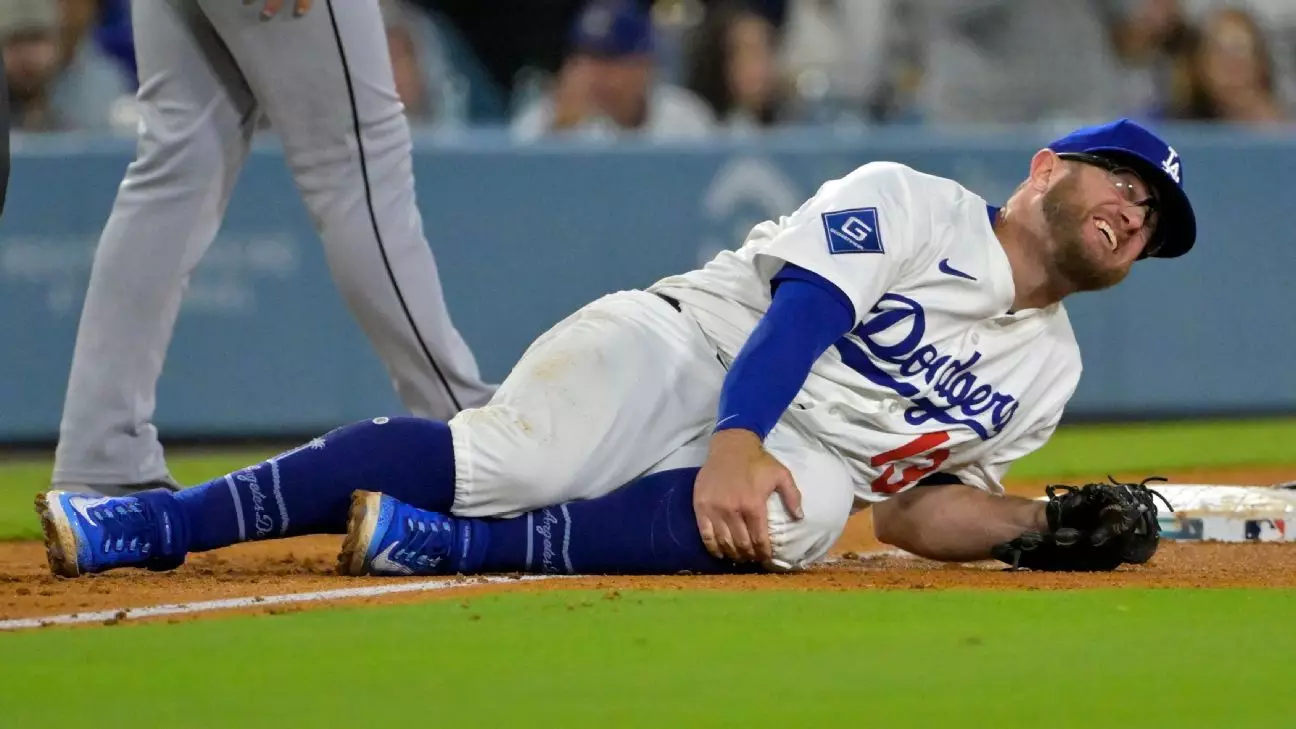In the high-stakes world of Major League Baseball, injuries often cast long shadows over talented athletes and their teams. However, there are instances when an athlete’s resilience and excellent medical insights turn a seemingly grave situation into a story of hope. Max Muncy’s recent diagnosis exemplifies this optimistic narrative—his MRI revealed no structural damage, a fortunate outcome that alleviates fears of long-term injury. Yet, his situation underscores a harsh reality: even with good news, recovery remains an arduous journey. Muncy’s relief is palpable, a testament to the anxiety that accompanies sports injuries, especially in the context of a sport that demands peak physical condition.
What makes Muncy’s response particularly compelling is his mental strength. Despite the pain, he recognizes the fortunate nature of his diagnosis, yet he candidly admits that the expected recovery period of six weeks feels daunting. His honesty sheds light on the mental toll injuries often take on athletes—a battle not only against physical limitations but also against the mental grind of uncertainty and frustration. This duality emphasizes that recovery is as much about mental resilience as it is about physical healing.
The Collision and Consequences: A Moment Frozen in Time
The incident that led to Muncy’s injury—a collision with Michael A. Taylor during a steal attempt—was a fleeting, yet impactful moment on the field. In sports, such collisions are part of the game’s chaos, often leading to injuries that are sometimes overshadowed by the play’s excitement. Muncy’s injury occurred during a routine defensive play, but the aftermath cast a different light on that play—a stark reminder of how quickly a game can change.
The physical impact was evident: Muncy was helped off the field, barely able to support himself, signifying a serious injury scenario. The collision with Taylor, who suffered a bruised back, underscores the rough, unpredictable nature of baseball. This event showcases how a seemingly routine play can pivot dramatically, altering the course of not just a game but a player’s season. The fact that Taylor cleared concussion protocols and was cleared to resume playing is fortunate, but it also highlights the unpredictable, intertwined fates of athletes in contact sports.
What is notable here is the mental resilience displayed by Muncy. Despite the grim scene on the field, he recognizes the thin line between worst-case scenarios and good news. His focus on the positive aspect—no torn ligament—demonstrates a mindset that can be vital for recovery and future performance.
Strategic Adjustments and Future Prospects
The injury’s ripple effects extend beyond Muncy himself, impacting team dynamics and strategic planning. The Dodgers, recognizing Muncy’s value as a core player, have already acted by recalling Esteury Ruiz and adjusting their lineup. These decisions reflect a team that understands the importance of adaptability in the face of adversity. Muncy’s absence will test the depth of the roster, but it also opens opportunities for other players to step into prominent roles.
Moreover, the team’s management, led by Dave Roberts, exhibits a cautious optimism. Roberts’ decision to avoid watching the gruesome replay and his focus on the good news suggest a leadership style that values mental health, team morale, and strategic patience. Such an approach is essential when dealing with injuries that could sideline a player for an extended period. The Dodgers’ ability to maintain focus and adapt tactics will eventually determine the team’s success in the coming weeks.
From Muncy’s vantage point, this injury may serve as a pivotal moment to reflect on his physical conditioning and mental preparedness for the relentless pace of the season. The anticipated six-week recovery period, while challenging, also presents an opportunity for renewal and resilience-building—traits that could define his career moving forward.
Injury, Recovery, and the Road Ahead
While Muncy has expressed hope and relief, his acknowledgment of the time frame highlights the harsh reality of sports injuries—the patience needed to come back stronger. The physical and mental challenge of missing nearly two months of competition is significant, especially for a player hitting .250 with power and run-producing capabilities. His absence will undoubtedly be felt in the Dodgers’ lineup, but it also emphasizes the importance of team depth and strategic flexibility.
Looking ahead, Muncy’s recovery process will be a test of his resilience and dedication. The support system within the Dodgers organization, combined with his personal resolve, will play critical roles in his healing journey. Moreover, this incident may serve as a wake-up call—not just to Muncy but to the broader athlete community—about the importance of injury prevention, proper technique, and mental toughness in navigating setbacks.
Ultimately, Muncy’s situation underscores an essential truth: in sports, setbacks are inevitable, but they also serve as opportunities for growth. His fight to return to form, while facing physical limitations, exemplifies the unyielding spirit that pro athletes must embody. Every injury, especially those that are not career-ending, offers a chance for athletes to recalibrate, refine their mental toughness, and emerge with renewed determination.

